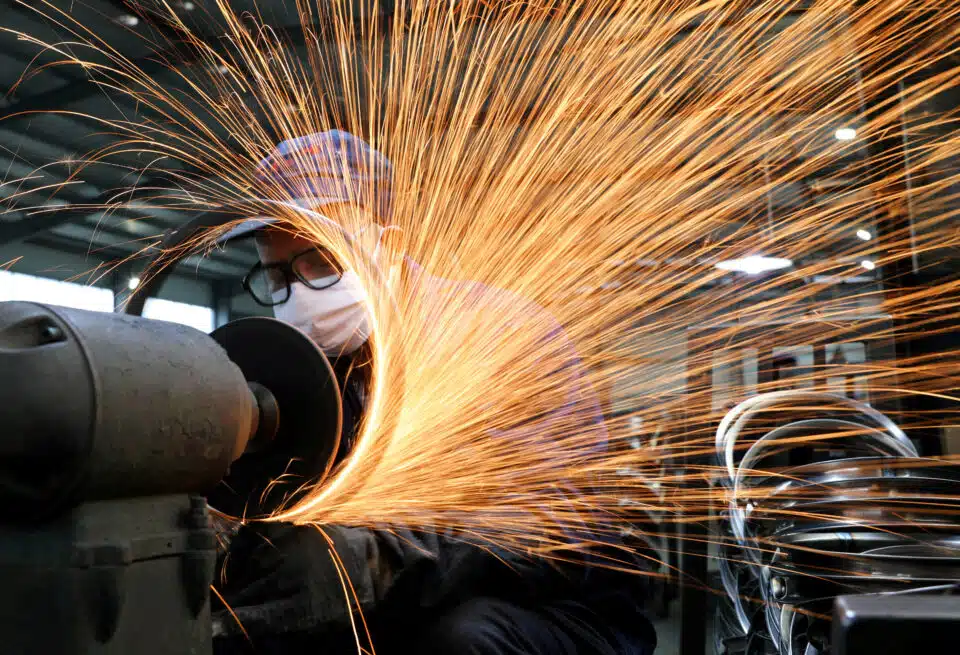LONDON/TOKYO/WASHINGTON, June 2 — Sluggish global demand deepened the decline in manufacturing activity across Europe and the United States, and remained a major challenge for many of Asia’s big exporters, business surveys for May showed on Thursday (June 1).
Purchasing managers’ indexes (PMIs) for the eurozone moved further below breakeven, despite factories cutting prices for the first time since September 2020. In the United Kingdom, output fell for a third month in a row and new orders declined at the fastest pace in four.
In the United States, manufacturing contracted for a seventh straight month as new orders continued to plummet amid higher interest rates, but factories boosted employment to a nine-month high.
And while PMIs from China and Japan showed swings in factory activity to growth last month, they stood in contrast to weak indicators from South Korea, Vietnam and Taiwan, where declines continued.
Compiled by S&P Global, Thursday’s HCOB final manufacturing PMI for the eurozone fell to 44.8 from April’s 45.8, just ahead of a preliminary reading of 44.6 but below the 50 mark separating growth from contraction for an 11th consecutive month.
An index measuring output, which feeds into a composite PMI due on Monday that is seen as a good guide to economic health, dropped to a six-month low of 46.4 from 48.5.
“The weakness in demand in the manufacturing sector, which has become increasingly evident since the beginning of the year in falling PMI readings, has now led the surveyed companies to reduce their production for the second month in a row,” said Cyrus de la Rubia, chief economist at Hamburg Commercial Bank.
“The decline in new orders from home and abroad signals that the weakness in output is likely to persist for several more months.”
The decline was broad-based, with activity falling in the currency union’s four biggest economies — Germany, France, Italy and Spain.
Factories cutting prices as the costs of production dropped at the fastest pace since February 2016 failed to stem a fall in demand.
That price drop will likely be welcomed by policymakers at the European Central Bank who have failed so far to get inflation back to target despite embarking on their most aggressive policy-tightening programme in the Bank’s history.
Inflation was 6.1 per cent last month, over three times the ECB’s goal, official data showed on Thursday.
The story was much the same in the U.S., where the monthly Institute for Supply Management’s manufacturing PMI fell to 46.9 last month from 47.1 in April. The seven-month run below the key 50 thresholds indicating contracting activity is the longest since the Great Recession.
The persistent weak readings in the PMI support analysts’ expectations that the U.S. economy will slip into recession this year. But there have been several periods, including the mid-1990s as well as mid- and late-1980s when prolonged readings of the PMI below 50 were not accompanied by a recession.
Asia Diverges
The patchy set of Asian PMIs pointed to an uneven recovery from the pandemic, particularly in China, and clouds the outlook for growth in the region.
“The PMI surveys suggest that China’s economic recovery was still ongoing in May, albeit at a slower pace. Waning fiscal support weighed on construction activity.
“But manufacturing output ticked up and the service sector is still seeing decent gains, suggesting that Q2 GDP growth may not be as bad as many fear,” said Julian Evans-Pritchard, an analyst at Capital Economics.
China’s Caixin/S&P Global manufacturing PMI rose to 50.9 in May from 49.5 in April.
The reading surpassed expectations of 49.5 in a Reuters poll, a stark contrast to a deeper contraction in activity seen in the official PMI released on Wednesday.
But China’s business confidence for the coming 12 months fell to a seven-month low amid concerns over global economic prospects, the Caixin survey showed.
Japan’s final au Jibun Bank PMI rose to 50.6 in May, its first reading above the 50.0 thresholds since October, as the economy’s delayed re-opening from pandemic curbs lifted demand.
However, separate data released on Wednesday showed that Japanese factory output unexpectedly fell in April.
Elsewhere in Asia, South Korea’s PMI stood at 48.4 in May, slumping into its longest spell of contractionary readings in 14 years, as slowing global demand hit output and orders.
Vietnam, Malaysia and Taiwan also saw factory activity shrink in May, while that of the Philippines expanded, the surveys showed.
India’s factory activity expanded at the quickest pace since October 2020, a sign strong demand and output were supporting Asia’s third-largest economy.
— Reuters





